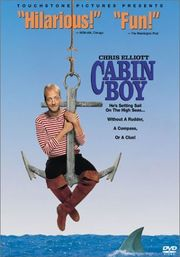This past Saturday’s class on ethical perspectives, along with the readings (and here, I will comment on the fact that the book has just been published, with the most timely of stories and cases, which I think is great!), have sparked discussions around the dinner table. Explaining Bentham’s Auto-Icon was rather difficult, as finding it during class posed a macabre shadow on the afternoon’s discussions. I’m glad to learn the head is actually made of wax. (For those interested, there is a virtual, interactive version of the Auto-Icon available here.) “That isn’t all,” I reported, “We threw a sumo wrestler off a bridge onto a railroad track, and talked about drinking the blood of a cabin boy from a turtle shell in the ocean.”

The ultimate purpose of these hypotheticals, of course, is to get us to thinking in ethical terms about what’s around us. The character education methods described in Chapter 3, or the evil monsters described in Chapter 2, all help highlight how leaders can be framed in terms of their ethics, moral values, and channeling Jeremy, if decisions are being made for the greater good.
But for me the point of writing this thus far is to question how many leadership decisions and actions we observe from others are made within an “Ethical Frame?” (And why Bolman & Deal in their fifth edition, won’t consider the Utilitarian Frame to complete their tome?) I know in reflecting, I often believe I am operating professionally (and personally) within very ethical boundaries, but I am not necessarily actively considering everything along those lines.
Among all the concepts presented in our book thus far, was the virtue of prudence. I honestly don’t use this word, so I took special note of its definition. It resonated with the way I think about how I live. It is something we all likely need as leaders—and aside from meditating on life, the surest way to build up our own cache of prudence is through experience. The wikipedia breaks down prudence in these ways, which are thoughtful ways to consider finding or accessing practical wisdom:
- Memoria — Accurate memory; that is, memory that is true to reality
- Intelligentia — Understanding of first principles
- Docilitas — The kind of open-mindedness that recognizes the true variety of things and situations to be experienced, and does not cage itself in any presumption of deceptive knowledge; the ability to make use of the experience and authority of others to make prudent decisions
- Shrewdness or quick-wittedness (solertia) — sizing up a situation on one’s own quickly
- Discursive reasoning (ratio) — research and compare alternative possibilities
- Foresight (providentia) — capacity to estimate whether a particular action will lead to the realization of our goal
- Circumspection — ability to take all relevant circumstances into account
- Caution — risk mitigation
I think in the coming weeks I will take special care to think not only ethically about decisions I make, and those of others, but also with prudence, especially during tough decisions. But the gnawing question in the back of my mind is still this: How many decisions made by other leaders are informed by active, ethical consideration? And how many are more akin to the “monsters” in Chapter 2, decisions made to serve one’s self, out of convenience, or personal gain?

I believe that most educational leaders make reasonably ethical decisions most of the time because it’s the nature of the people in the profession. And, I think that the results of the Brutal Boss Survey will “prove” my theory when (I predict) we see very few truly negative scores. However, I’m not naïve, either, and I recognize that self-promotion and greed can and does taint decision-making; after all, even educators are flawed individuals and far from perfect.
To me, the primary goal of this course is to make you actively think about every leadership decision you make—even seemingly simple ones–and to consider different viewpoints and perspectives when doing your job every day. Shake up the complacency of routine, automatic decisions by thinking about them in new and different ways and become a better person and a better leader.